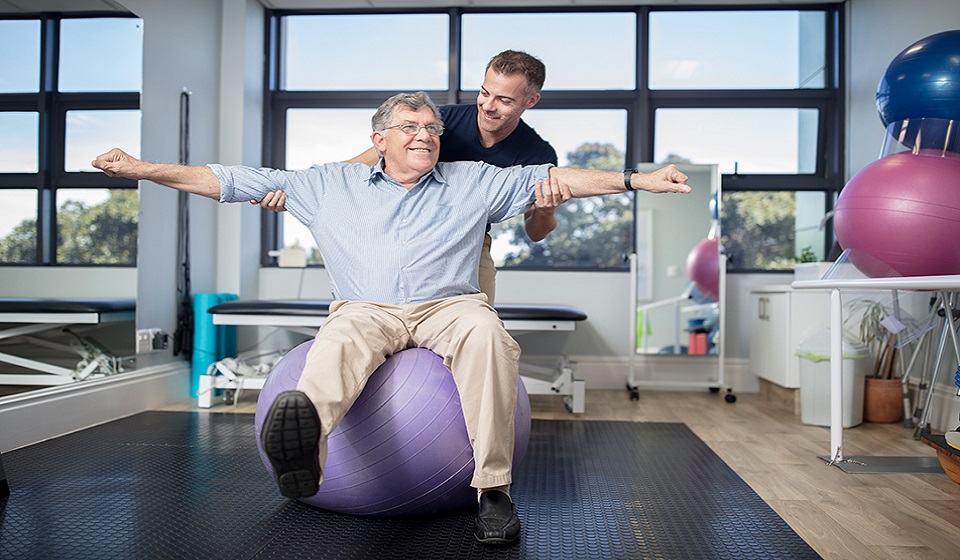
In Leduc, you can find Vestibular Rehabilitation Therapy, a specialized form of physical therapy addressing vestibular system disorders and dysfunctions. This system, involving inner ear structures and neural pathways, affects balance and spatial orientation. Impairment can cause dizziness, vertigo, imbalance, and coordination issues. Vestibular rehabilitation in Leduc aims to alleviate these symptoms and restore optimal function.
The 4 Components of Vestibular Rehabilitation:
Vestibular therapy in Leduc typically involves a comprehensive treatment approach that addresses the specific needs and goals of the individual. The following four components are basically incorporated into vestibular rehabilitation programs:
Assessment and Diagnosis:
The first step in vestibular rehabilitation is a thorough assessment to determine the nature and extent of the vestibular dysfunction. This may involve a detailed medical history review, physical examination and specialized tests such as the Dix-Hallpike maneuver, videonystagmography (VNG), or electronystagmography (ENG). These assessments help identify the underlying cause of the vestibular problem and guide the development of an appropriate treatment plan.
Canalith Repositioning Managers:
Physicians employ canalith repositioning maneuvers like the Epley and Semont techniques to address benign paroxysmal positional vertigo (BPPV), a prevalent vestibular condition marked by momentary bouts of vertigo provoked by specific head motions. These maneuvers involve a series of head and body positions that aim to reposition displaced calcium crystals (otoconia) within the inner ear’s semicircular canals. Restoring the normal positioning of these crystals can alleviate symptoms of vertigo and dizziness.
Habituation Exercises:
Habituation exercises are an integral part of vestibular rehabilitation therapy in Leduc, particularly for individuals with conditions such as unilateral vestibular hypofunction or vestibular migraine. These exercises involve repetitive and controlled exposure to movements or visual stimuli that provoke dizziness or imbalance. Over time, the brain adapts and habituates to these stimuli, reducing the intensity and frequency of symptoms. Habituation exercises aim to improve the brain’s tolerance of vestibular signals and enhance overall balance and stability.
Balance and Gait Training:
Balance and gait training focuses on improving postural stability, coordination and walking ability. These exercises are designed to challenge the balance system and enhance proprioception (awareness of body position) and vestibular-ocular reflexes. Balance training exercises may include standing on unstable surfaces, performing weight shifting activities or practicing specific balance tasks. Gait training involves exercises to improve the quality of walking, including stride length, step symmetry, and coordination between the limbs. By strengthening the balance and gait mechanisms, individuals can regain confidence and reduce the risk of falls associated with vestibular dysfunction.
Vestibular Rehabilitation – Treatment for Dizziness and Imbalance:
Vestibular rehabilitation is a highly effective treatment approach for various vestibular disorders and associated symptoms. It is beneficial for individuals experiencing dizziness, vertigo, imbalance and unsteadiness resulting from conditions such as:
- Benign Paroxysmal Positional Vertigo (BPPV): BPPV is characterized by brief episodes of vertigo triggered by specific head movements. Canalith repositioning maneuvers are highly successful in resolving BPPV symptoms by repositioning displaced otoconia within the inner ear’s semicircular canals.
- Unilateral Vestibular Hypofunction (UVH): UVH occurs when there is a reduction or loss of vestibular function in one ear. Vestibular rehabilitation focuses on enhancing compensation mechanisms and improving balance and coordination.
- Vestibular Migraine: Vestibular migraine is a type of migraine headache that involves dizziness, vertigo and imbalance. Habituation exercises and lifestyle modifications can help manage symptoms and reduce the frequency and severity of vestibular migraine episodes.
- Meniere’s Disease: Meniere’s disease involves recurrent vertigo episodes, hearing loss, tinnitus (ear ringing), and a sensation of fullness in the affected ear. Vestibular rehabilitation can help individuals cope with symptoms during and between episodes and improve overall balance and functioning.
Conclusion:
Vestibular Rehabilitation Therapy in Leduc is a specialized form of physical therapy offering relief from dizziness, vertigo, imbalance, and related symptoms. Tailored treatment includes assessment, canalith repositioning maneuvers, habituation exercises, and balance training. This comprehensive approach enhances the quality of life for those with vestibular disorders. If you’re dealing with such symptoms, consult a qualified healthcare professional for improved balance and stability through Vestibular Rehabilitation Therapy in Leduc.

